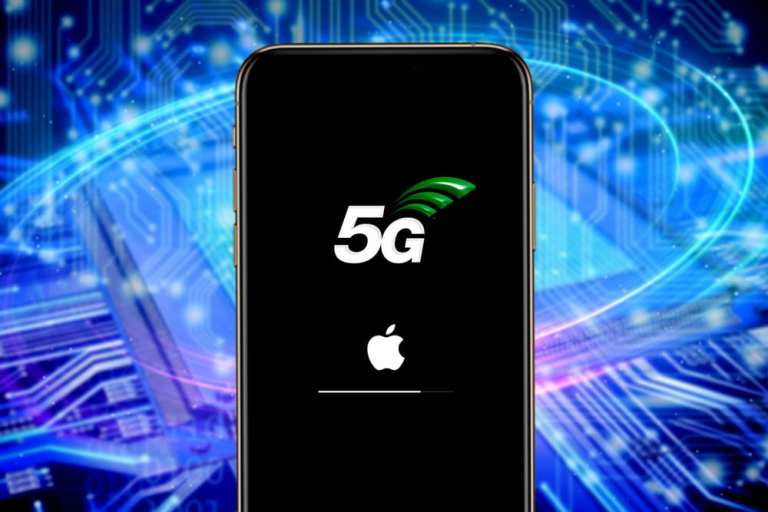
The “Big Four” – Amazon, Apple, Facebook and Google – had one of those weeks that looked quiet on the surface, but contained some positive news for retailers. The biggest news (or news leak) came from Apple watchers. Not only is 5G coming in October, said those in the know, but it could be hitting the market in massive numbers.
How massive? Bloomberg reports that Apple has asked suppliers for – and will get – 75 million 5G iPhones, with plans to ship as many as 80 million worldwide. As of January of this year, reports put the total installed base of iPhones at 1.5 billion. Apple will launch four new 5G phone models in October, a fact that has not been officially announced but is a loosely guarded secret at best.
That’s great news for Apple – but it’s also great news for retailers in every category, as 5G will open up new in-store and eCommerce opportunities with the rollout of the high-speed network and compatible phones. Dressing room technology, for example, can be revolutionized using RFID and 5G. Currently in limited use as “magic mirrors,” the RFID tag paired with a 5G network can use data to display personalized ads, or to recommend different products while the consumer is still in the store.
“When stores begin using 5G networks, customers and employees will have the mobile capability for these types of interactions and data collections,” says the AT&T Business blog. “What’s more, the personalized experience doesn’t have to end when the shopper leaves the store. During the interaction, you can seamlessly collect data such as email address, sizes and style preferences, and use it to send targeted offers. Imagine opting not to buy a product after trying it on due to a steep price, only to receive an email a few days later letting you know it’s on sale.”
For retailers, there’s also the concept of connected spaces. With 5G networks, devices can exchange data more easily, and that means companies outside of Amazon will have more access to “smart shelves” that can detect when a consumer has removed an item for purchase and when a shelf needs to be restocked.
“With the increased capacity of 5G networks, retailers will be able to create richer, more detailed experiences when integrating their physical and digital worlds,” according to the U.K. tech site Current Daily. “This will make technologies that we’re already experimenting with, and seeing consumer adoption of, only more of a possibility. The result will mean shoppers are able to immediately check product materials or ingredients through the use of smart glasses or their smartphones, for instance. Those same apps will also guide customers to the products they want by projecting directions into their field of view in real time as they navigate the store space.”
No Time Like Prime Time
If Amazon is having a Prime Day in the U.S. this year, it would have to be announced next week. The first business day after the Labor Day holiday is Tuesday, Sept. 8. If the Prime Day date is indeed Oct. 5, as has been speculated, that leaves three weeks of promotion time. If it goes later than Oct. 5, then Amazon is cutting into its own holiday selling season, as well as every other retailer’s.
However, one of the possible reasons for the delay of the announcement reared its head again this week: the USPS. Hurricane Laura set the postal service back even more than it had been, with budget cuts and other system delays. Maybe Amazon is spooked that the postal service would sully its reputation for on-time delivery. If that’s the case, Prime Day could be scaled back or pushed out entirely.
“While Amazon has been working hard at building its delivery network over the past few years, nearly 40 percent of the ‘last-mile’ deliveries are completed by USPS, which can pose a big problem for this upcoming influx in orders,” says Android Central. “Amazon consistently boasts each year about the millions of products that were sold, which means there are likely to be millions more boxes that need to be delivered, and that’s on top of all the other holiday shipping people will be doing.”
No More Micro Searches
Retailers that count on Google Ads might want to keep track of some changes from the search giant. According to Search Engine Land, Google has started to notify its advertisers that if a search result doesn’t meet a traffic threshold, it won’t be shown on the page.
“In order to maintain our standards of privacy and strengthen our protections around user data, we have made changes to our Search Terms Report to only include terms that a significant number of users searched for. We’re continuing to invest in new and efficient ways to share insights that enable advertisers to make critical business decisions,” a Google spokesperson told Search Engine Land on Wednesday (Sept. 2).
Per the report, the reason for the change is privacy. Google wants to keep advertisers from being able to use minimal results to identify individual users, or accessing any personally identifiable information (PII) that users may include in their search queries. Unless retailers have extremely low traffic thresholds, the change will most likely be negligible.